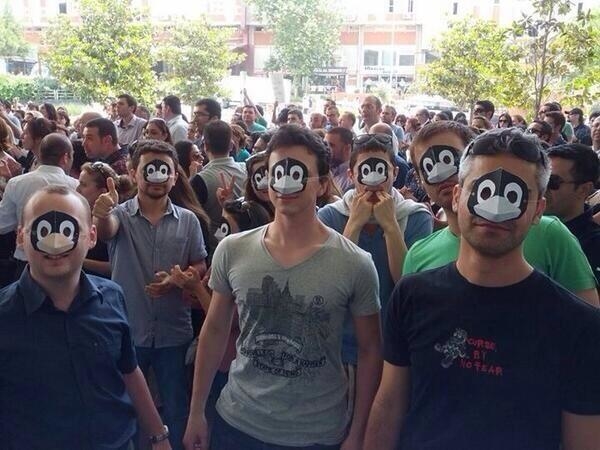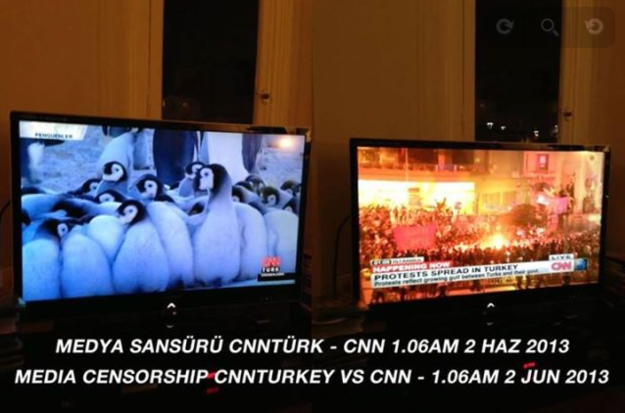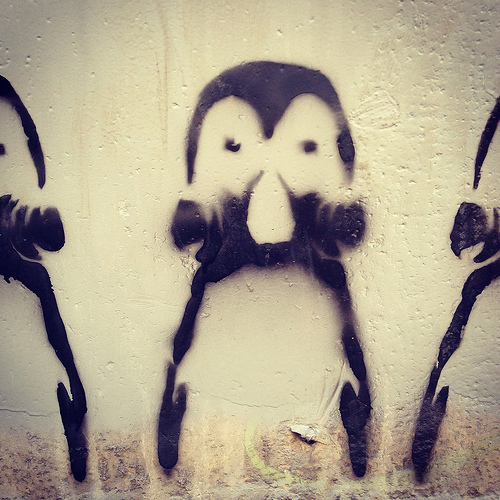Almost every mass media-outlet in Turkey has some kind of connection with the Turkish government. Thus, they are shy on publishing negative or critical reports on Erdogan's reign. When the Gezi protests started, for example, they were not covered by the media at all.
On the first of June the police came and attempted to disperse the protesters with excessive pepper spray, pressurized water and tear gas. Perhaps if the start wasn't newsworthy enough this surely was. However, those who would switch the channel to CNN Turk wouldn't find any mention of the protests. Instead, CNN Turk was broadcasting a documentary on... penguins.
Ever since images of the penguins from Spy in the Huddle, a three-part documentary on penguins, have been circulating Facebook, Twitter and on walls--accompanied with caption such as "Don't use tear gas - the glaciers are melting!". The gas mask penguin has become one of the defining images that has originated during the Gezi protests and can now be seen decorating walls all over Istanbul.


